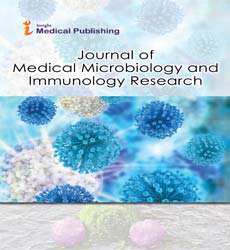ISSN : 2634-7164
Journal of Medical Microbiology and Immunology Research
Preventing infections and antibiotic resistance is one of many global public health issues and has long been a priority for the different public authorities.
Abstract
The excessive consumption of antibiotics is one of the greatest risk factors for the emergence of antimicrobial resistance (AMR). thus, rationalizing the consumption of antibiotics in the city and in the hospital environment is an active approach to fight against AMR. In 2020, the average antibiotic consumption in 31 countries was 89.0 mg per Kg, ranging from 2.3 mg per Kg to 393.0 mg per Kg. Between 2011 and 2020, an overall decline in sales of 43% was observed for the 25 EU/EEA countries that consistently reported since 2011, with a notice able decrease in sales identified for some of the highest selling countries. The drug-resistant infections led to 1.9 billion dollars in health care costs, more than 10 000 death among older adults in one year. The excessive use and misuse of antimicrobial drugs accelerate the emergence of drug-resistant strains, poor infection control practices, inadequate sanitary conditions and inappropriate food-handling, poverty, lack of or inadequate diagnostics tests, use and misuse of antibiotics in agriculture and the environment, travel and other factors encourage the emergence and further spread of antimicrobial resistance. Recognizing and understanding these factors will ultimately optimize preventive strategies for an unpredictable future. Conclusion: Using a large set of studies we found that antibiotic consumption is associated with the development of antibiotic resistance. A subsequentmeta-analysis, with a subsample of the studies, generated several significant predictors. Countries in southern Europe produced a stronger link between consumption and resistance than othe rregions so efforts at reducing antibiotic consumption may need to be strengthened in this area. Increased consumption of antibiotics may not only reduce greater resistance at the individual patient level but may also reduce greater resistance at the community, country and regional levels, which can harm individual patients. Finally, we can say that the high levels of AMR for several important antibiotic-bacterium combinations reported in 2020 show that AMR remains a serious challenge in the world.
Open Access Journals
- Aquaculture & Veterinary Science
- Chemistry & Chemical Sciences
- Clinical Sciences
- Engineering
- General Science
- Genetics & Molecular Biology
- Health Care & Nursing
- Immunology & Microbiology
- Materials Science
- Mathematics & Physics
- Medical Sciences
- Neurology & Psychiatry
- Oncology & Cancer Science
- Pharmaceutical Sciences
